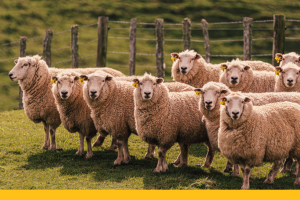

Fly control tools
Integrated Pest Management (IPM)
Alongside chemical control there are many methods that can help with fly control:
- Control worms to reduce the formation of dags.
- Control other external parasites (such as lice) that cause wool and skin damage and increase susceptibility to flystrike.
- Good feed management – well-fed sheep are more resistant to strike and better able to cope with internal parasites.
- Keep sheep clean – use crutching and shearing strategically. Shearing helps prevent flystrike for a few weeks as any eggs or maggots dry out. Shearing can be an effective short-term control measure in the face of fly challenge; this usually will reduce the need for chemical treatment for four weeks or more. Under very high challenge, however, animals may have to be treated off-shears or soon after shearing. Crutching and dagging are used to remove soiled wool; also treat pizzle rot, fleece rot and skin/wool diseases to reduce susceptibility.
- Dock tails correctly – the tail must not be docked any shorter than the distal end of the caudal fold. The intent here is that the tail be left long enough to cover the vulva in ewe lambs, and a similar length in ram lambs. Tails docked too short will form skin folds by the tail and increase faecal and urine staining.
- Genetic selection – cull sheep that are frequently struck, sheep affected by fleece discolouration and chronic skin and wool diseases, or daggy sheep. Source resistant breeding stock. Disposing of all carcasses and minimising rotten vegetation can reduce fly breeding grounds.

Reduce exposure to farm hotspots
Some parts of the farm have a higher fly challenge than others. These areas, such as bushy gullies, in the lee of shelterbelts and at the bush margin, are warm and sheltered. A water source such as a stream running through a paddock will increase fly survival and reproduction. Windy, open, dry ridges will have the least fly challenge. Identify high-risk mobs (such as hoggets) and avoid placing them in high risk paddocks during times of increased fly challenge.
Monitoring
By anticipating the strike season, protection strategies can be implemented early in the risk period. Assessing the weather conditions and the history of fly activity on the farm can be useful in predicting the fly challenge. Monitor traps can also give an early warning of increasing fly numbers and identify high-risk areas of the farm.

